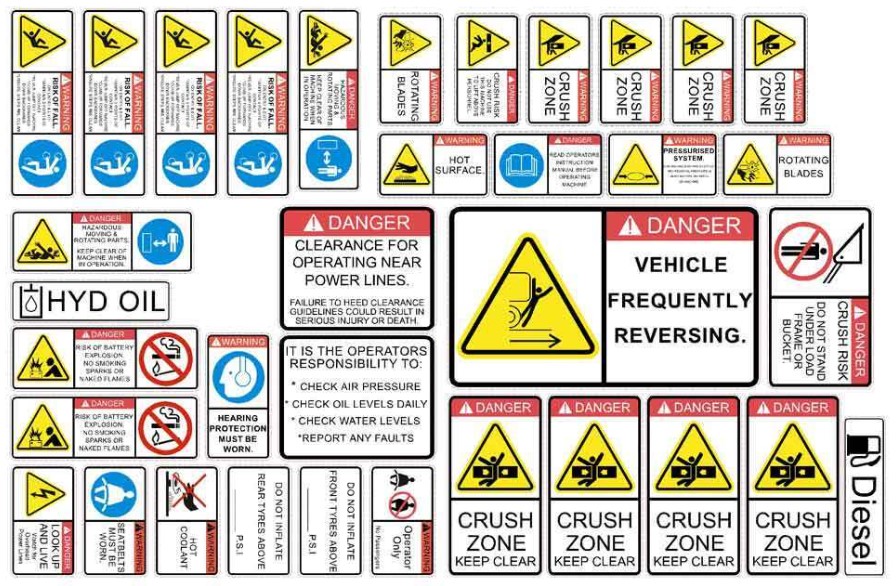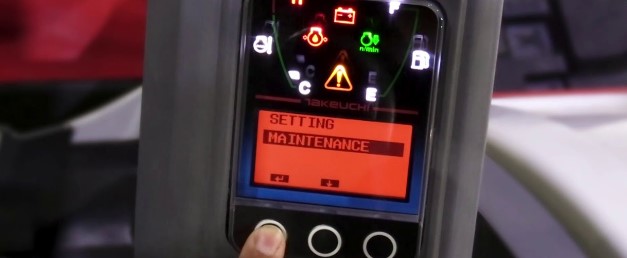Takeuchi Warning Lights, Symbols And Meanings are an integral part of vehicle operation and safety. These lights serve as a visual indicator that something important requires attention from the driver. Different types of Takeuchi Warning Lights exist and each has its own specific meaning. This article will provide insight into the various types of Takeuchi Warning Lights and their meanings to ensure safe road travel for drivers.
What are Takeuchi Warning Lights?

Takeuchi warning lights are important for the operator to be aware of. The first is the engine oil pressure light, which illuminates when there is a low oil pressure. If this comes on, it should alert the operator to stop and check their oil levels. The second light is the coolant temperature light that goes off when temperatures rise too high; in this instance, they should immediately stop and allow the excavator to cool down before continuing operations. Lastly, if there is less than 10% fuel remaining in their tank then they will see a fuel level warning light illuminating them – at this point they should refuel as soon as possible. All these Warning Lights have distinct meanings that must be understood by an operator; flashing lights mean danger ahead while steady lights suggest safety ahead, and both together indicate that one must pull over no matter what.
What Does the Takeuchi Warning Lights and Symbol Mean?

Takeuchi warning lights and symbols are found on some excavators to alert operators of potential danger. The light is typically red, yellow or green depending on the severity of the situation. Red indicates an emergency such as a fire, while yellow implies caution such as touching a hot part of the machine. Green means that the equipment is operable.
The Takeuchi “Caution” light features a yellow light bordered in red and is usually displayed prominently on the center console or dashboard to indicate possible hazards ahead. The “Stop” light displays an orange with black border when drivers need to come to a complete stop before proceeding. An intense white with red border “Emergency Stop” light alerts operators if someone has been stuck between their vehicle and curb. The “Warning” symbol consists of a yellow triangle with red border which suggests there may be potential danger ahead but not necessarily an emergency situation; it can be seen alongside other warning signs like Stop or Emergency Stop lights around vehicles.
To ensure workplace safety, all Takeuchi warning lights should always be taken seriously by operators and followed accordingly for best results in any hazardous environment due to machinery malfunctioning or breakdowns that could potentially cause injuries or damage property at job sites.
Most Common Takeuchi Warning Lights
The Takeuchi warning lights are an important tool for drivers to keep themselves and other road users safe. Located on the dashboard of a vehicle, these five lights indicate potential hazards and should be used in conjunction with hazard warning signals. The first light located on the top left corner alerts drivers that there is an airbag deployment danger, while the one at bottom right warns about low tire pressure. Excessive speed or drifting is signaled by the third light and failing brakes by the fourth one. Finally, the fifth light indicates possible issues with steering system.
In order to get maximum safety benefits from using these warnings, it is important to understand what each of them means and how they should be operated correctly. For instance, if you see any of these five lights flashing on your dashboard then you should slow down immediately until it stops flashing or contact your mechanic as soon as possible if it remains steady after slowing down safely. Additionally, when driving in hazardous conditions such as heavy rain or fog – where visibility might be severely impaired – having a good understanding of Takeuchi Warning Lights will help you stay safe during such scenarios too!
Takeuchi Warning Lights are a helpful addition to any driver’s safety arsenal; especially since they can alert motorists ahead of time so they can take necessary precautions before something dangerous happens out on the roads! So make sure to review their meanings periodically and always pay attention whenever you notice one has been activated while driving – no matter how minor its signal may appear!
